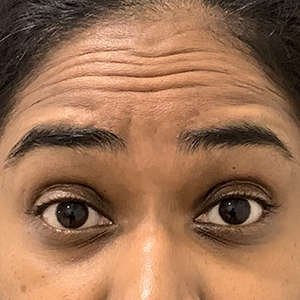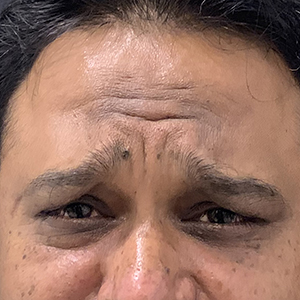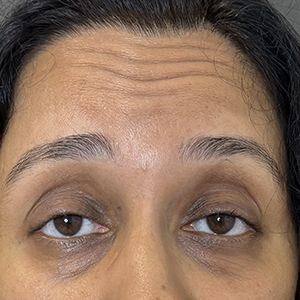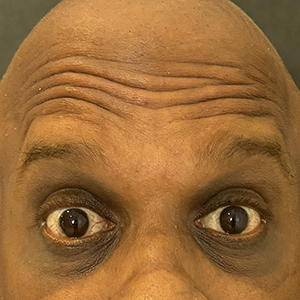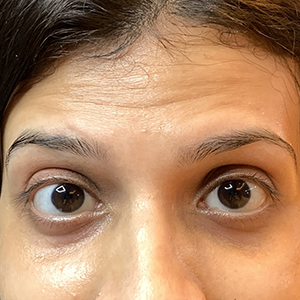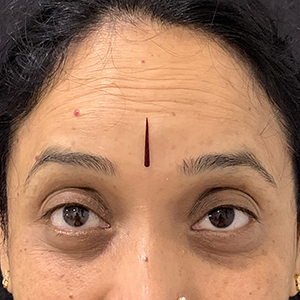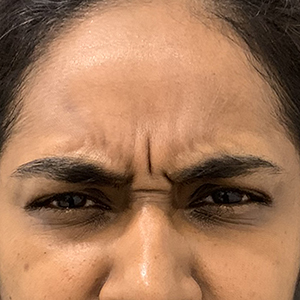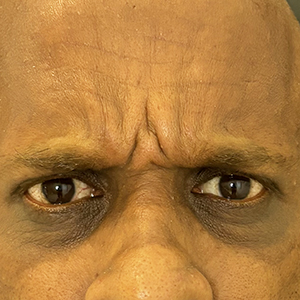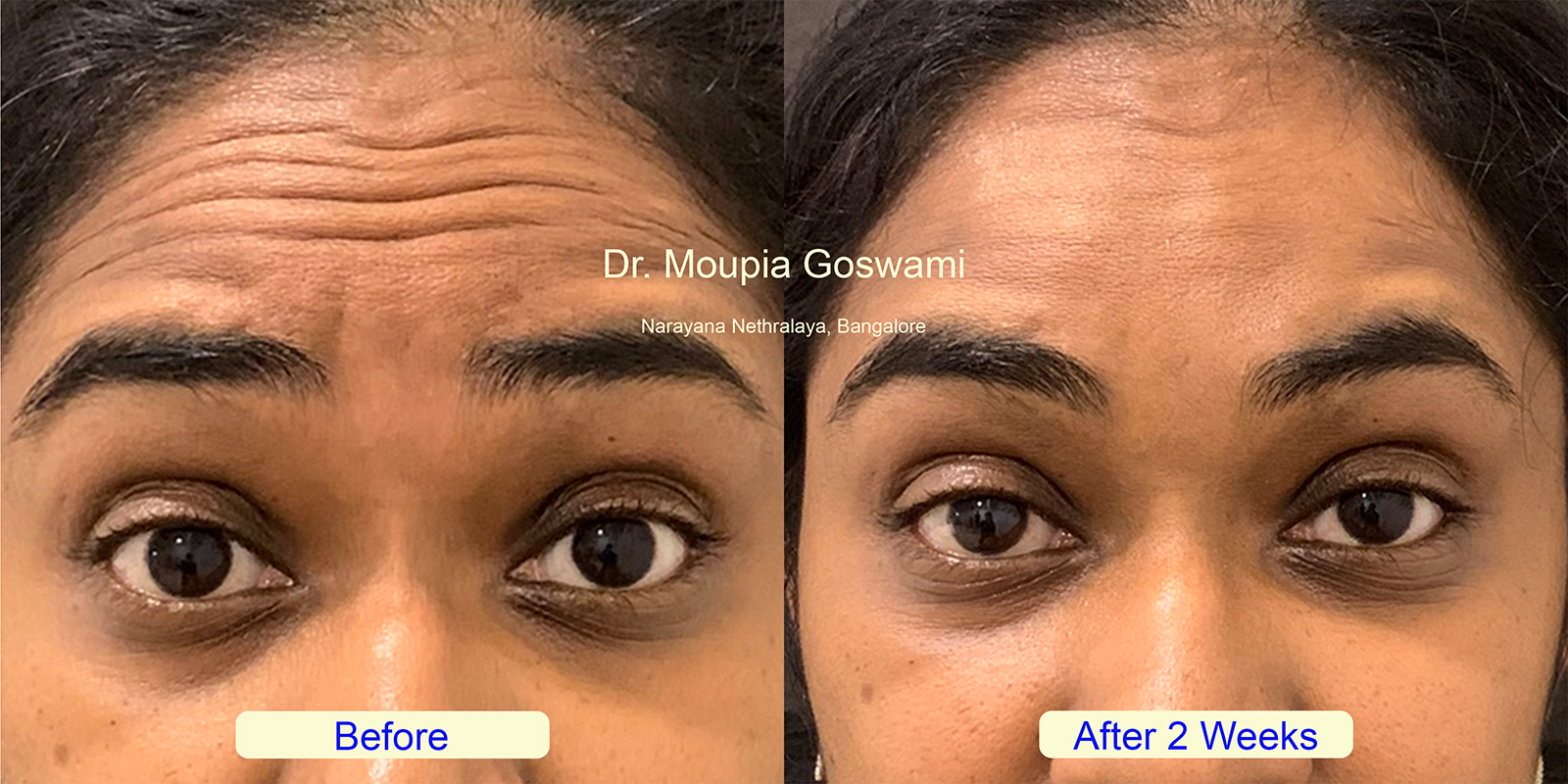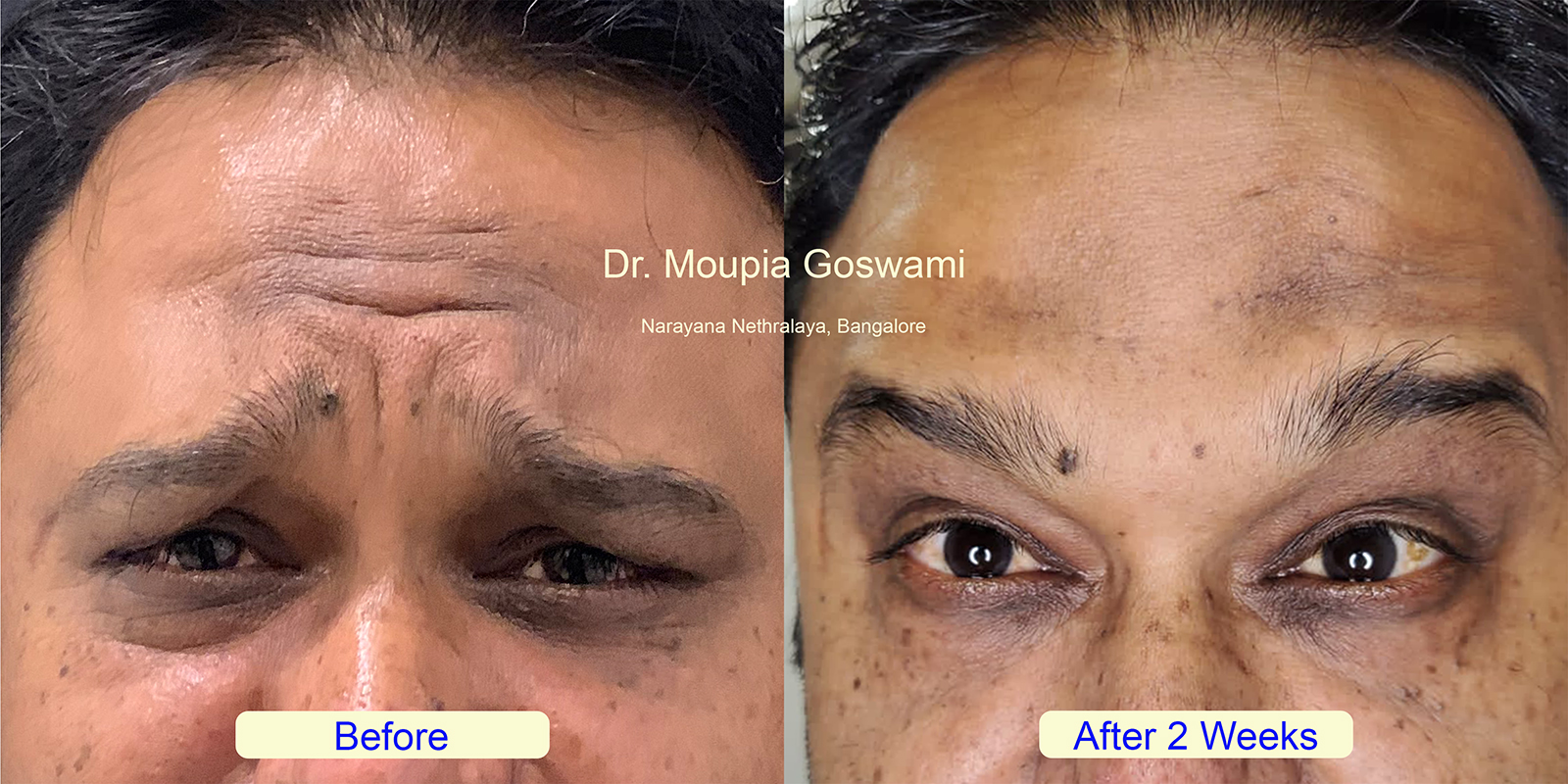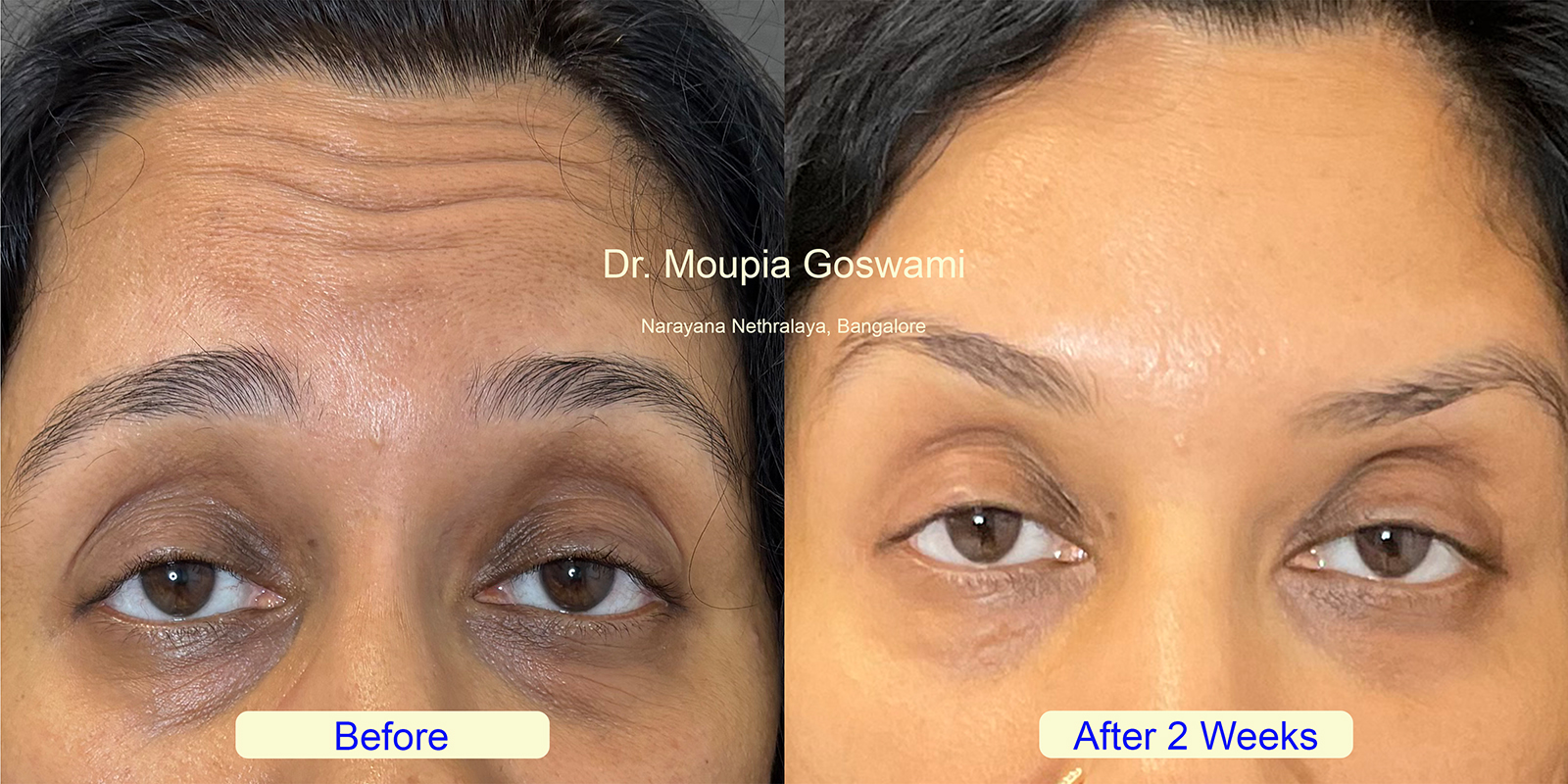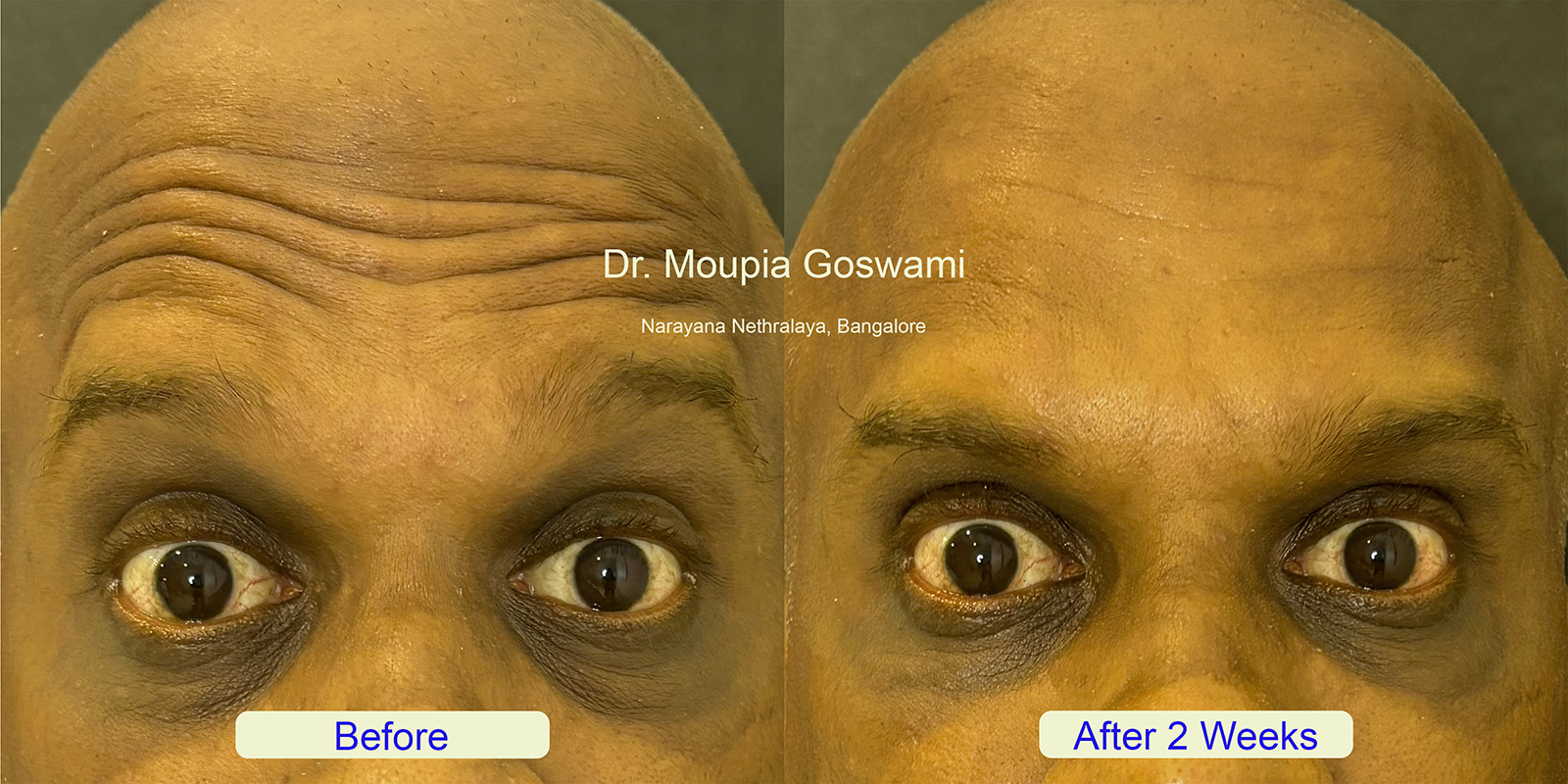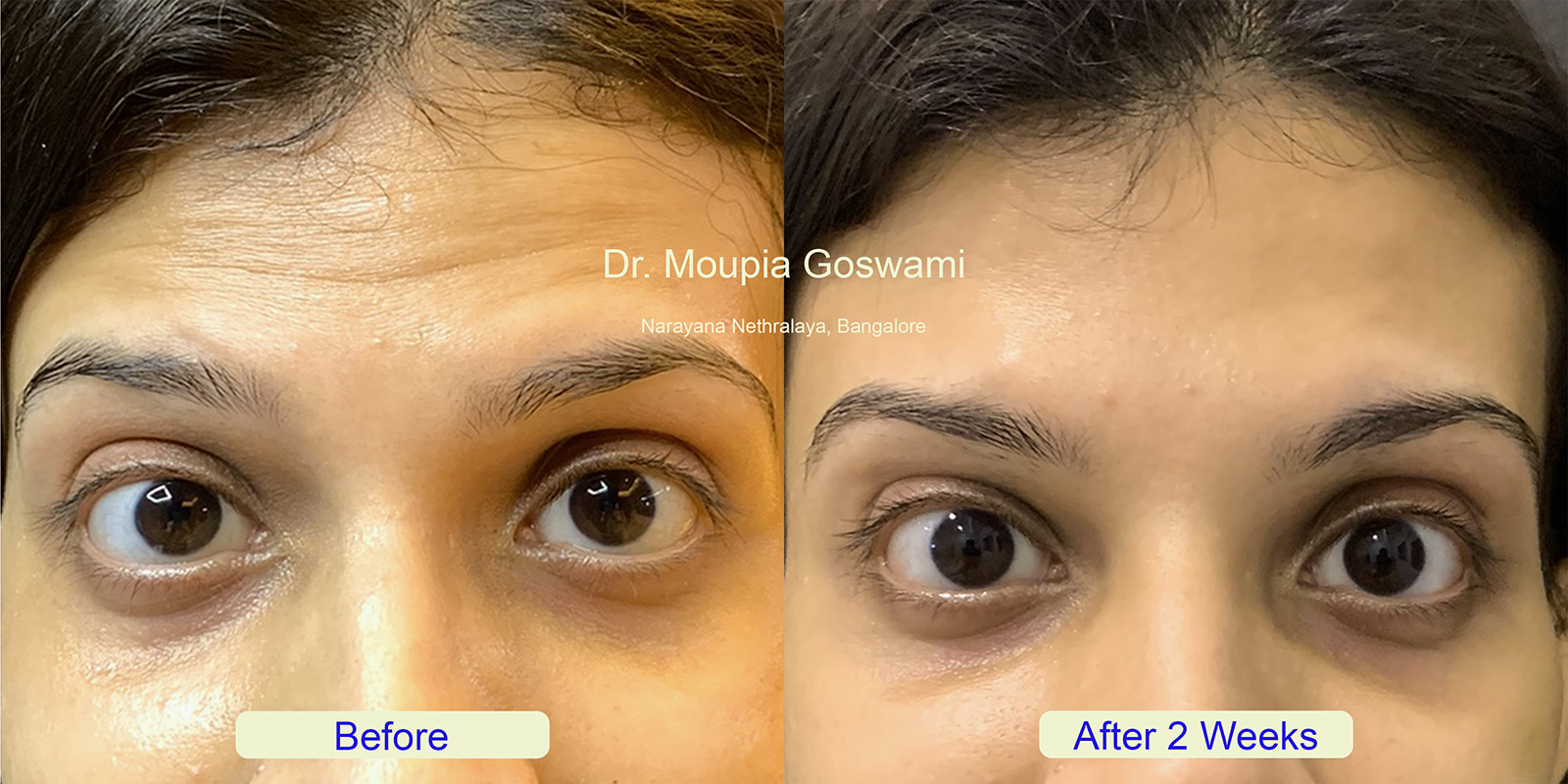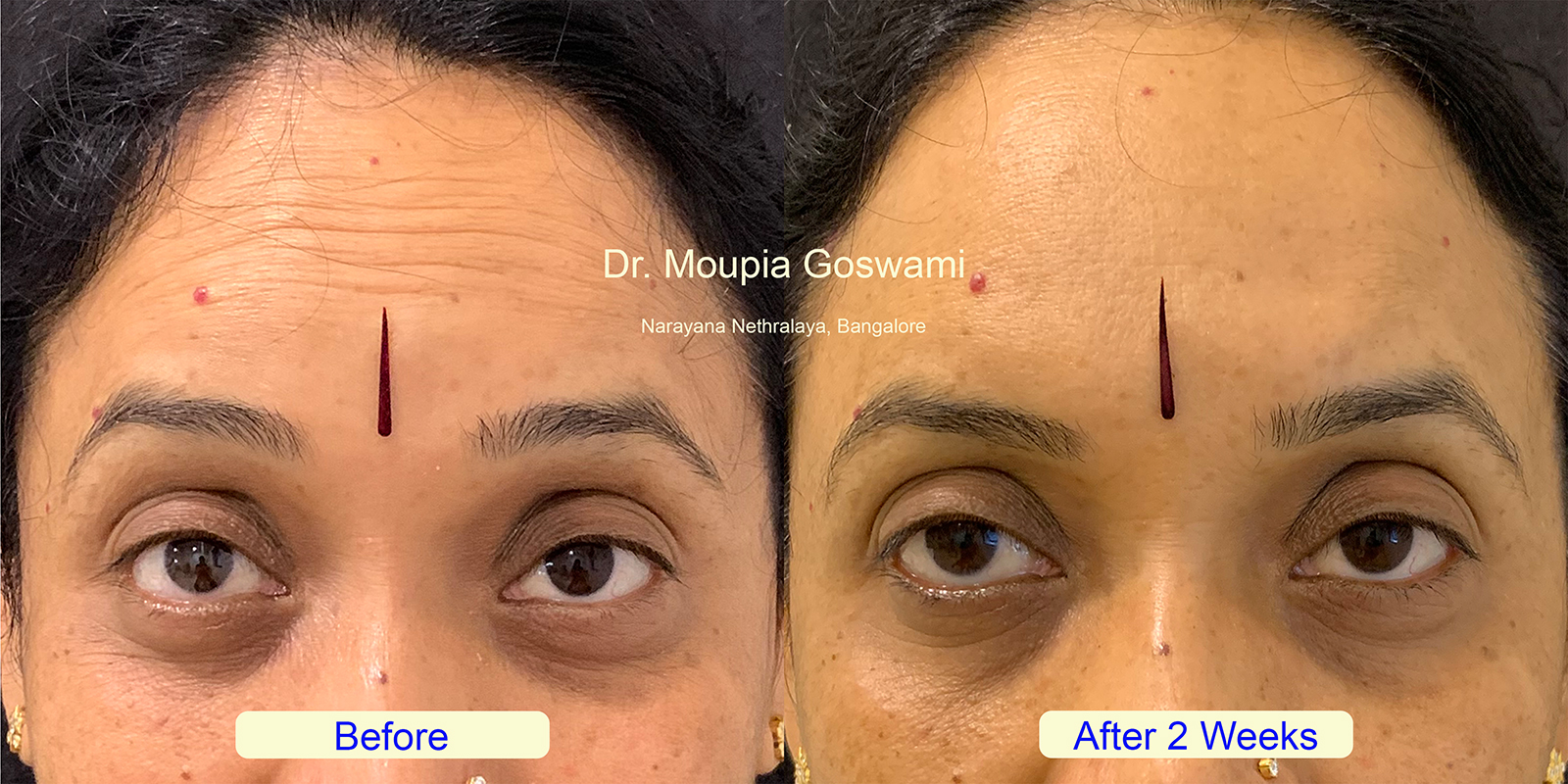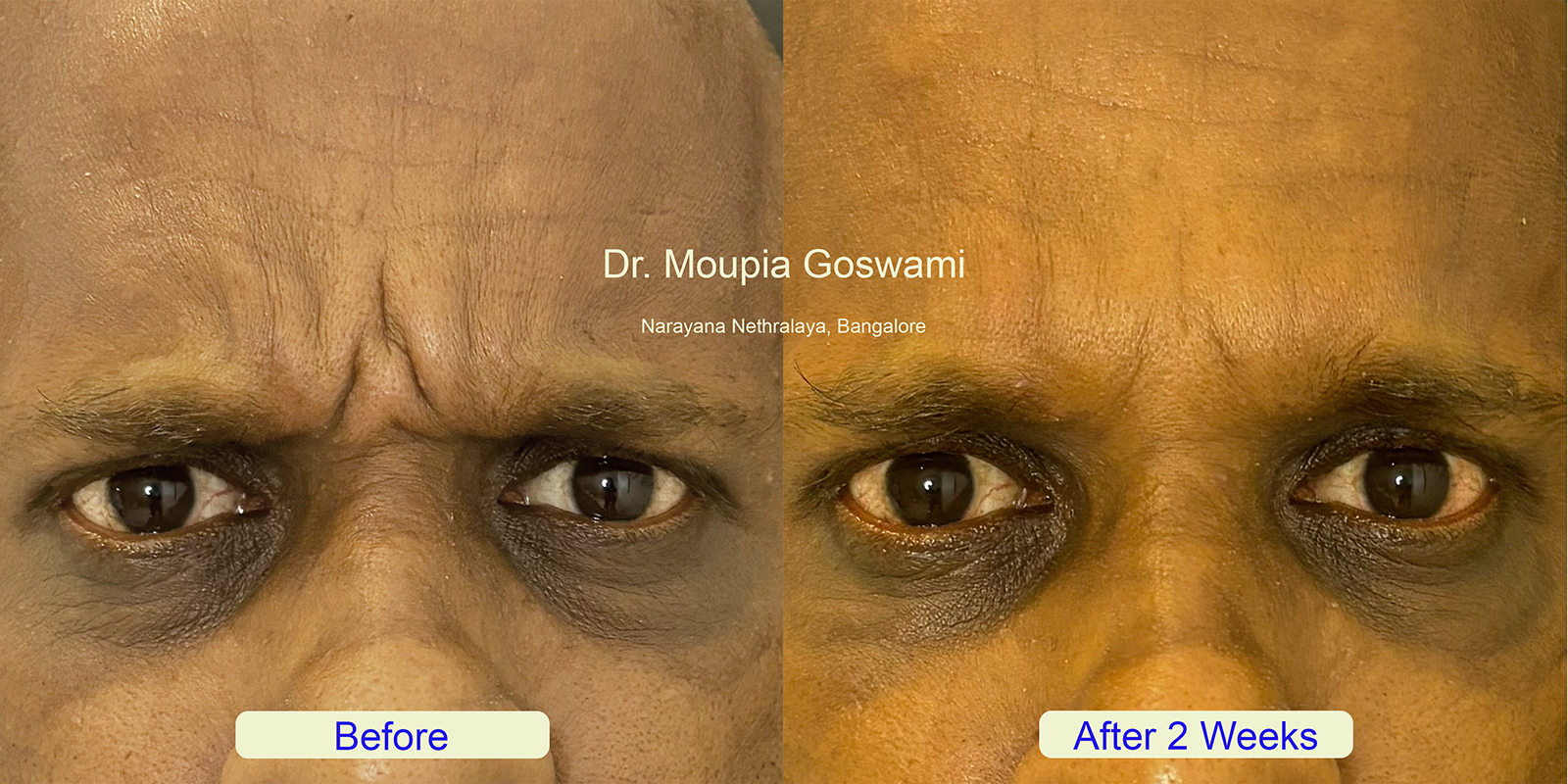Forehead and frown lines are common dynamic wrinkles that develop due to repeated facial expressions and the effects of aging. Forehead lines are horizontal creases that form across the forehead, often from raising the eyebrows repeatedly. Frown lines, also called glabellar lines , appear as vertical wrinkles between the eyebrows, typically caused by frowning, squinting, or concentrating.
Over time, as the skin loses elasticity and collagen, these lines become more pronounced and may appear even when the face is at rest. External factors such as prolonged sun exposure, smoking, and stress can accelerate their development. While these lines are a natural sign of aging, non-invasive treatments like Botox, dermal fillers, or other skin-rejuvenating therapies can help smooth their appearance and restore a more youthful, relaxed look.
